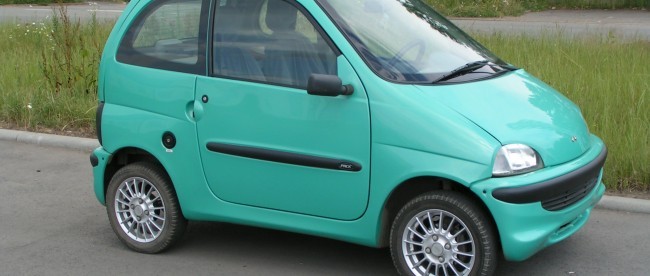Driving a car usually requires a driver’s license, a testament to the responsibility and skill needed to operate a vehicle. However, in France, there exists a unique category of vehicles known as VSP cars, or voitures sans permis. These are essentially “cars without a license,” offering a legal way to drive on public roads without the traditional driver’s permit. But what exactly are VSP cars, and what should you know about them?
VSP cars, short for voitures sans permis, are microcars that can be legally driven in France without a driver’s license. These vehicles, often produced by companies like Ligier, resemble standard cars but are smaller and come with significant limitations. They are designed with basic functionalities, including seating for typically two people, standard car controls, and features like headlights, brake lights, and mirrors. Some models even offer modern amenities such as backup cameras and sound systems, blurring the line between basic transportation and comfort. Despite these features, VSP cars are notably expensive for their size and capabilities, with higher-end models reaching prices comparable to larger, more conventional cars.
To legally operate a VSP car in France, the requirements are considerably less stringent than obtaining a full driver’s license. The minimum age is set at 14 years old, making them accessible to a younger demographic. Potential drivers are required to pass a written exam on the French highway code, although this requirement is waived for individuals born before 1988 when the law was last revised. Furthermore, a minimum of four hours of accompanied driving experience is mandated. Crucially, unlike standard driving qualifications, no practical road test is required to drive a VSP car. This lenient framework makes driving accessible to a much broader segment of the population in France.
However, the ease of access to VSP cars comes with notable drawbacks. Insurance costs for VSP cars are typically high, reflecting the increased risk associated with drivers who have not undergone rigorous vetting. Performance-wise, these vehicles are significantly underpowered and restricted. Regulations limit their empty weight to 350kg (770 lbs), top speed to 45km/h (approximately 28 mph), and engine power to a maximum of 5.5 horsepower. These limitations mean VSP cars are unsuitable for highway driving and are primarily intended for urban or short-distance travel. Moreover, safety is a significant concern. VSP cars often lack essential safety features found in standard cars, such as airbags and anti-lock braking systems, which are critical in high-speed accident scenarios. Driving them on highways is not only prohibited but also, as some reports suggest, “irretrievably stupid” due to these safety deficits.
Despite these limitations, VSP cars occupy a unique and generally accepted niche in France. They are often viewed more as heavy quadricycles, similar to motorcycles or electric scooters in terms of regulation, offering a safer alternative to these while still being more accessible than standard cars. For elderly individuals or those with mobility issues, VSP cars can provide a practical mode of transportation. Conversely, concerns exist about VSPs potentially being used by individuals with suspended licenses, undermining the intent of driving restrictions. Data on this specific issue remains limited due to the light regulatory oversight of VSP cars.
In conclusion, VSP cars represent a distinctive approach to personal transportation in France, providing a legal avenue for driving without a traditional license. While offering accessibility and convenience, especially for specific demographics, it’s crucial to acknowledge their limitations in performance, safety, and higher operational costs like insurance. Understanding what VSP means with cars involves recognizing this balance between accessibility and practicality within the French transportation landscape.
